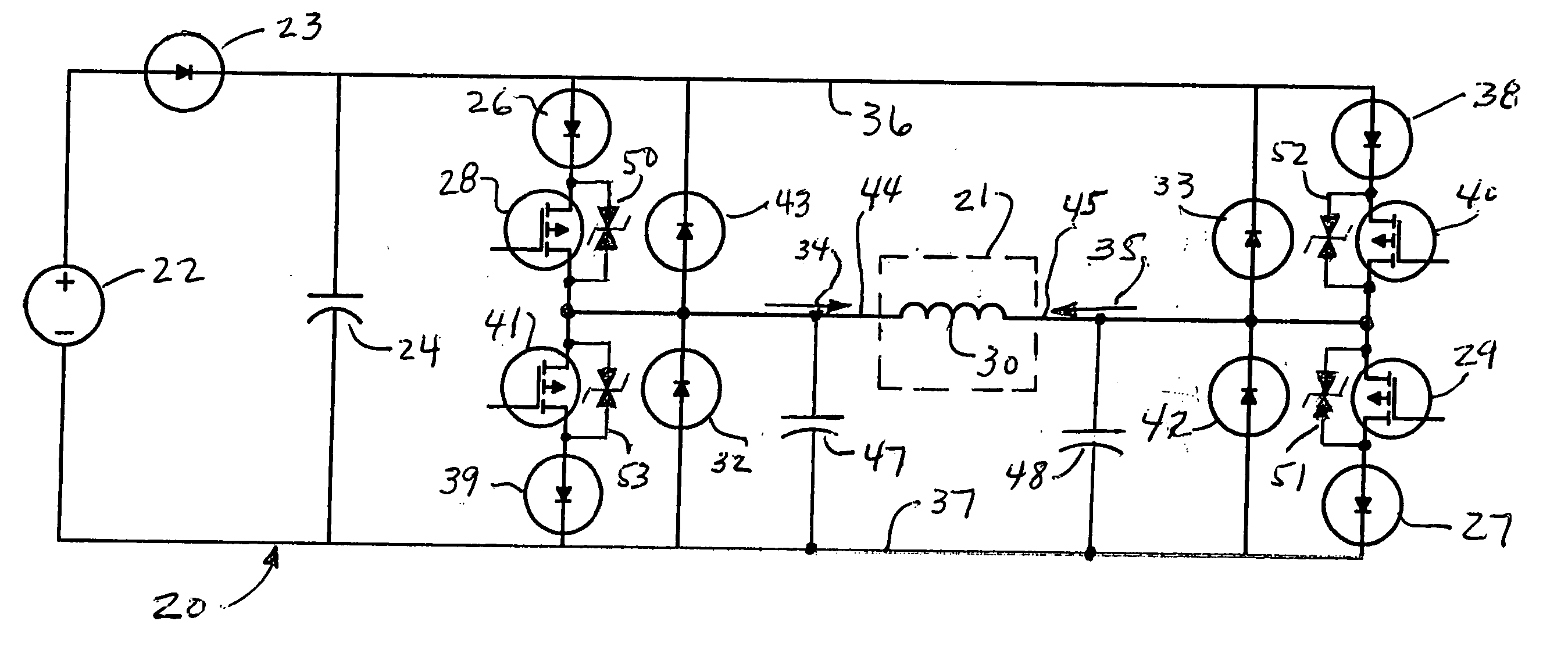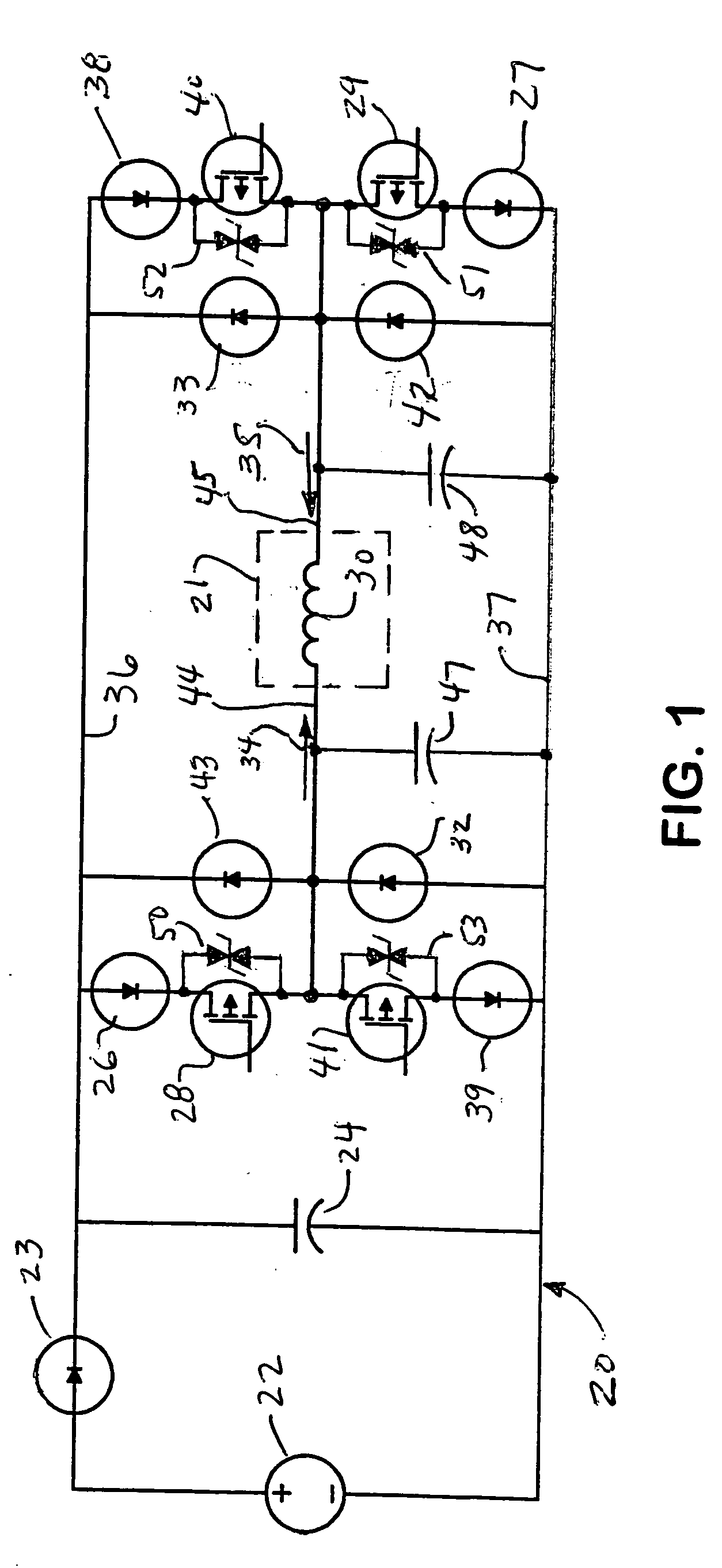Magnetic actuator trip and close circuit and related methods
- Summary
- Abstract
- Description
- Claims
- Application Information
AI Technical Summary
Benefits of technology
Problems solved by technology
Method used
Image
Examples
Embodiment Construction
[0021] An electronic circuit, generally designated 20, for controlling the magnetic actuator of a recloser 21 in accordance with the present invention is shown in FIG. 1. The magnetic actuator includes an actuator coil 30 which is selectively energized by circuit 20 to open or close electrical contacts (not shown) in the recloser 21 in a manner known in the art, depending upon the direction of current through the actuator coil. Typically, recloser 21, including actuator coil 30, is located in a box at an elevated position on a utility pole or transmission tower, such as near or adjacent to the transmission lines of an electrical distribution system. On the other hand, circuit 20 is typically located close to ground level, with a pair of lines 44 and 45 providing electrical connection from circuit 20 to actuator coil 30. The length of lines 44-45 between actuator coil 30 and circuit 20 is thus exposed to the air and to ambient conditions associated with the electrical distribution sy...
PUM
 Login to View More
Login to View More Abstract
Description
Claims
Application Information
 Login to View More
Login to View More - R&D
- Intellectual Property
- Life Sciences
- Materials
- Tech Scout
- Unparalleled Data Quality
- Higher Quality Content
- 60% Fewer Hallucinations
Browse by: Latest US Patents, China's latest patents, Technical Efficacy Thesaurus, Application Domain, Technology Topic, Popular Technical Reports.
© 2025 PatSnap. All rights reserved.Legal|Privacy policy|Modern Slavery Act Transparency Statement|Sitemap|About US| Contact US: help@patsnap.com


